On the dedication page of Emily Nunn’s memoir The Comfort Food Diaries, there’s a quote from the late food writer and novelist, Laurie Colwin:
“No one who cooks, cooks alone.”
It made perfect sense to me seeing Laurie’s quote in Emily’s book.
They are both brilliant writers who make you feel like they’re chatting with you in your kitchen, saying hilarious things, all the while cooking something delicious.
And they possess that thing Lou Grant told Mary Richards she “had” in 1970 on the very first episode of The Mary Tyler Moore Show.
Mr. Grant may have hated it, but I don’t and neither do legions of readers. Whether you call it spunk, nerve or moxie, Ms. Colwin and Ms. Nunn —they got it.
Their writing is witty and they don’t shy away from sharing the messy parts of their lives. And, of course, there’s all that great food.
There are books I go back to again and again. Home Cooking, More Home Cooking and The Comfort Food Diaries are three of them. The books inspire me, touch me and make me laugh. They also teach me about writing by reading them.
Home Cooking and More Home Cooking
Home Cooking was published in 1988 and in the introduction Ms. Colwin says the following:
I do not believe that you have to spend a lot of money to eat well: it is hard to beat a plain old baked potato.
I agree. I made a baked potato as a snack — 425 degrees for 1 hour. I coated the skin with olive oil and sea salt, delicious.
Laurie wrote fiction for The New Yorker and essays at Gourmet. She also wrote novels, but her books Home Cooking and More Home Cooking have become wildly popular with new generations of readers.
Ms. Colwin writes about entertaining in her first dollhouse of a Manhattan studio apartment.
Many thought I must be insane to live in so small a space, but I loved my apartment and found it the coziest place on earth.
The book is comprised of essays that mix memoir with cooking and dining and life and the chapter titles alone are fantastic.
Feeding the Fussy is one of my favorites. She has this to say:
Some people have been taught that it is impolite to turn anything down, and if you ask them, they say: “Oh, I eat everything.” Then, as you are slicing the steak, they shyly tell you that they have not eaten meat in ten years.
She loved to stay home and cook for her friends and her husband and daughter.
…as I was taught in my Introduction to Anthropology, is not just the Great Works of mankind that make a culture.
It is the daily things, like what people eat and how they serve it.
Laurie Colwin died of an aortic aneurysm in 1992 at the age of 48. Home Cooking and More Home Cooking are as fresh and fun and insightful to read as they ever were. I’m so glad new generations of readers and cooks continue to discover and love her work. Here is a link if you’d like to learn more: PenguinRandomHouse
The Comfort Food Diaries: My Quest For The Perfect Dish To Mend A Broken Heart
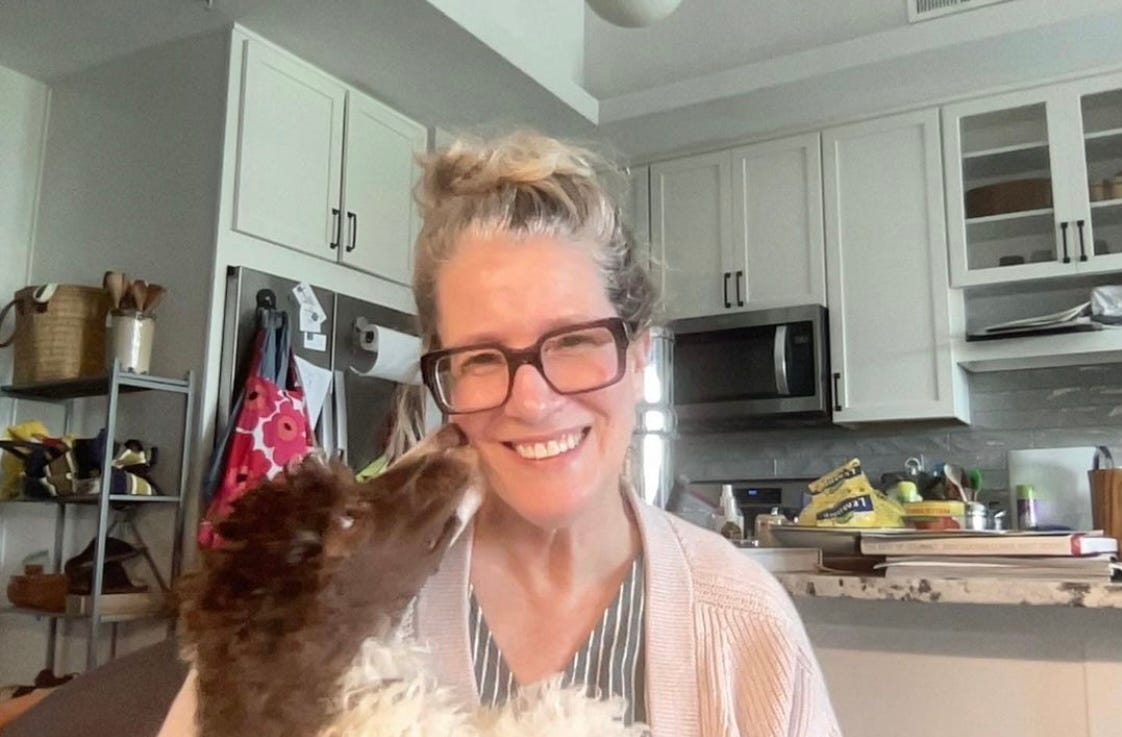
A salad is an abused, neglected thing.
— Laurie Colwin, 1988
But not in the hands of Emily Nunn.
Emily writes one of the most lively and popular newsletters on Substack, The Department of Salad: Official Bulletin. (Link:
) Every week she and the “boys in the lab” come up with gorgeous salads, presented with a side of dry wit.She’s worked as an Arts Editor at The New Yorker covering Theatre and also wrote and edited the Tables for Two column. A move to Chicago where she was a features reporter at The Chicago Tribune and also had a restaurant column called Table-Hopping was terrific — until a massive, company-wide layoff at the paper in 2009. With time at home, she threw herself into running the household for her fiancé and his young daughter. Everything was great, until it wasn’t.
Emily’s brother took his life and her fiancé broke up with her a short time after. She had no money, was without a job, and was drinking. One night, after several glasses of wine, she took to Facebook and poured out her broken heart.
It was the modern-day version of going down to the river, rending my garments, beating my breast. Except stupider.
The morning after, she faced her computer with dread and received a “remarkable surprise”.
Instead of punishment for my honesty, I had been rewarded with kindness.
Friends around the country invited her to visit and one friend suggested “It should be your comfort food tour.”
After a period of recovery, Emily reconnected with family and friends on her tour. Especially touching is her time spent with her Uncle John and Aunt Mariah, both now passed, and to whom she dedicated her book.
This memoir is beautifully written, honest, poignant and hilarious. And as with Laurie Colwin’s work, the food seamlessly arrives in the stories at just the right moment.
I asked Emily if there was anything she’d like readers to know about her and here’s what she had to say:
I am thinking about one thing I wish people knew about me. I feel like I’m a pretty open book. I once scored 34 points against Blacksburg HS in basketball. Just kidding. I did, but I think the world already knows that. Also just kidding.
Emily Nunn. Baller. Thank you, Emily! To learn more about The Comfort Food Diaries here is a link: Simon&Schuster
Here are two recipes from the book.
Ezra Pound Cake
The name ‘Ezra Pound Cake’ is a perfect example of something so funny and unexpected in the writing that I laughed out loud when I read it.
This is a cold oven cake, no pre-heating. It rises beautifully, and the crust is out-of-this world along with the buttery cake. It’s based on Elvis Presley’s favorite cake recipe. Here’s Emily about the name;
The name, like so many other things about my childhood, confused me as a kid. (Mother surely never met Elvis. I doubted he was ever a baker.) But as a grown-up, I have the power to change not just the recipe, but the name of the cake if I want to. And as an overdue nod to my long-suffering English Lit professor in college, I have done so.
Only Way Tomato Sandwich Recipe
From The Comfort Food Diaries, here’s the process, per Emily:
Here is the only way to make a tomato sandwich, ever:
You need a perfectly ripe tomato that is heavy with juice…
Slice the tomato with a sharp knife into quarter inch slices. Slather both pieces of bread with so much mayonnaise that you can’t see the texture of the bread through it; think of it as a main ingredient rather than a condiment. Sprinkle one side liberally with sea salt, the other with freshly ground pepper. Place a few slices of tomato on one side of the bread. (If you’re lucky, you’ll have tomato slices that match the size of the bread.)
I was lucky and got a ‘heavy with juice’ Michigan-grown tomato at the farmer’s market and the tomato slices covered the bread and then some. Emily recommends Pepperidge Farm Thin White Bread, (which I used) and the mayo was Hellmann’s — I know Duke’s is also a favorite — but I grew up on Hellmann’s. There are still beautiful tomatoes at the market, but hurry and get some so you can have a tomato sandwich, too!
Some Nice News
Last week I found out that Genevieve Jenner, another writer I greatly admire was one of the nominees at the Guild of Food Writers UK awards ceremony for her book Chocolate Cake for Imaginary Lives. I interviewed Genevieve earlier this year for this newsletter (it’s in the archive). Congratulations, Gen! Here’s a link to the book: DeixisPress
Have a great week, everyone.
Jolene

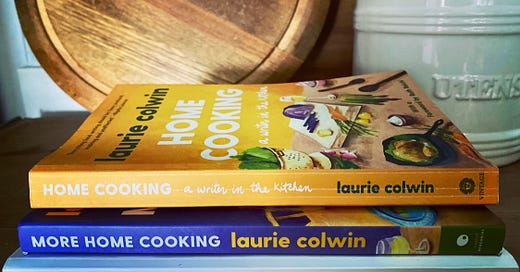




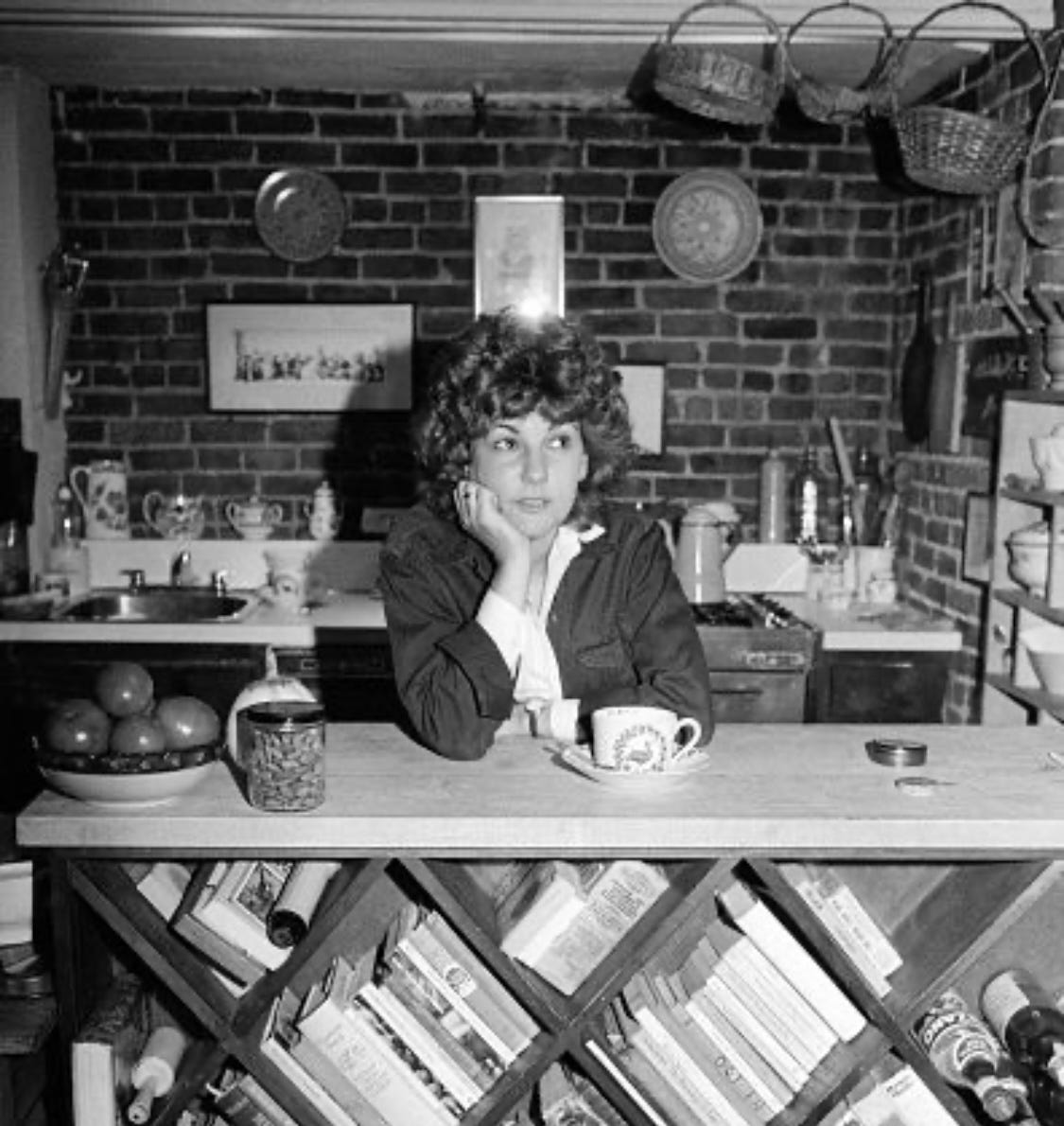
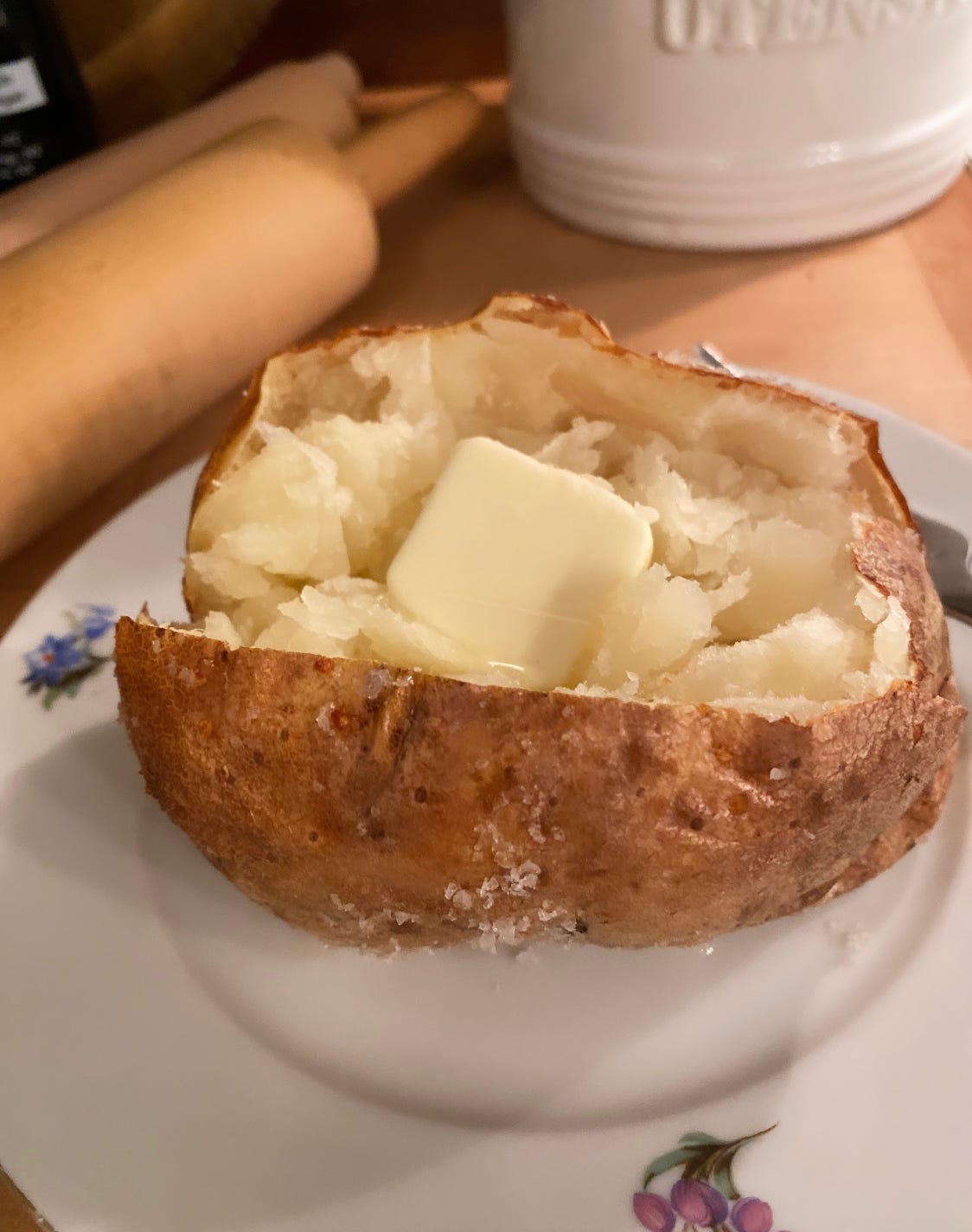
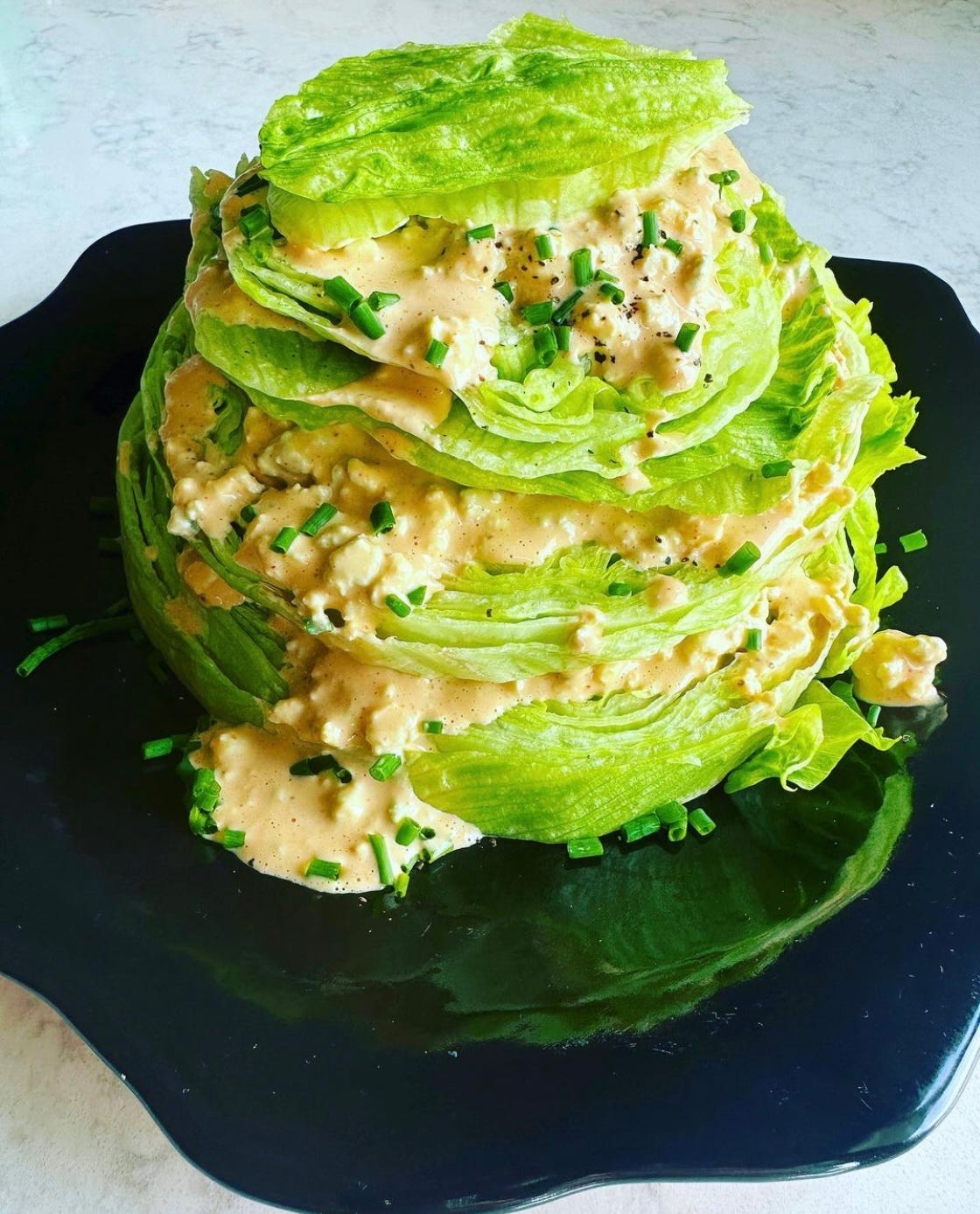
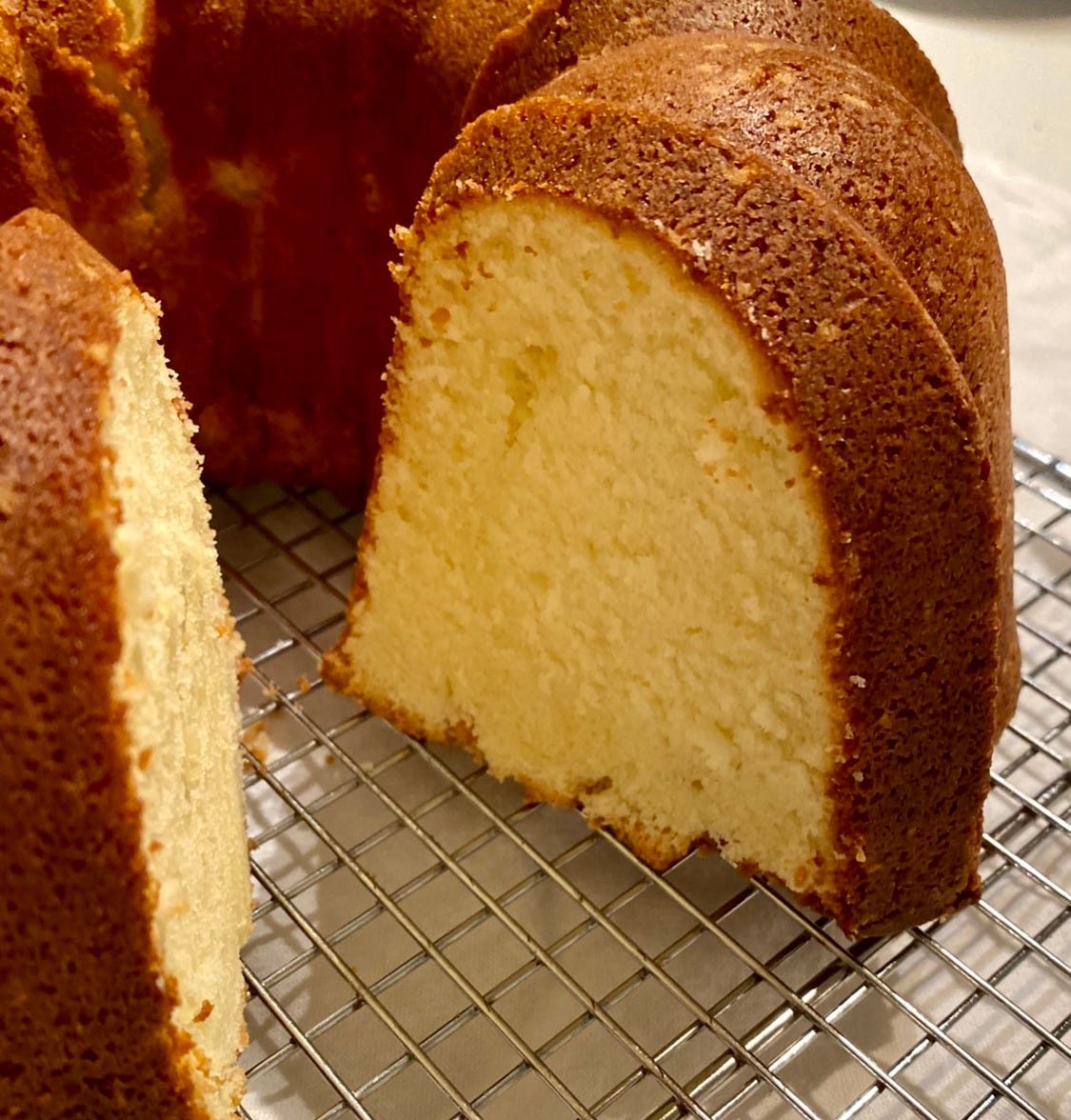
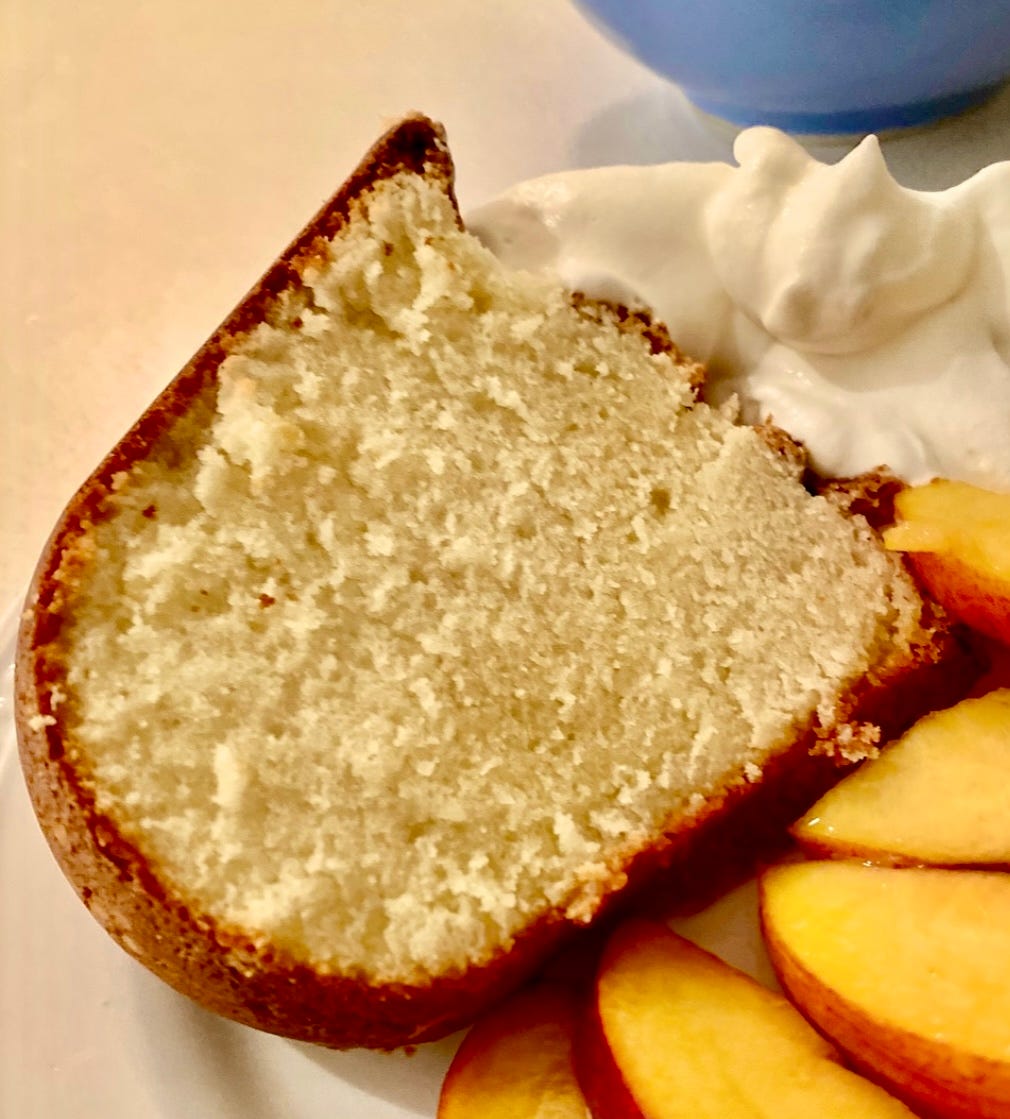
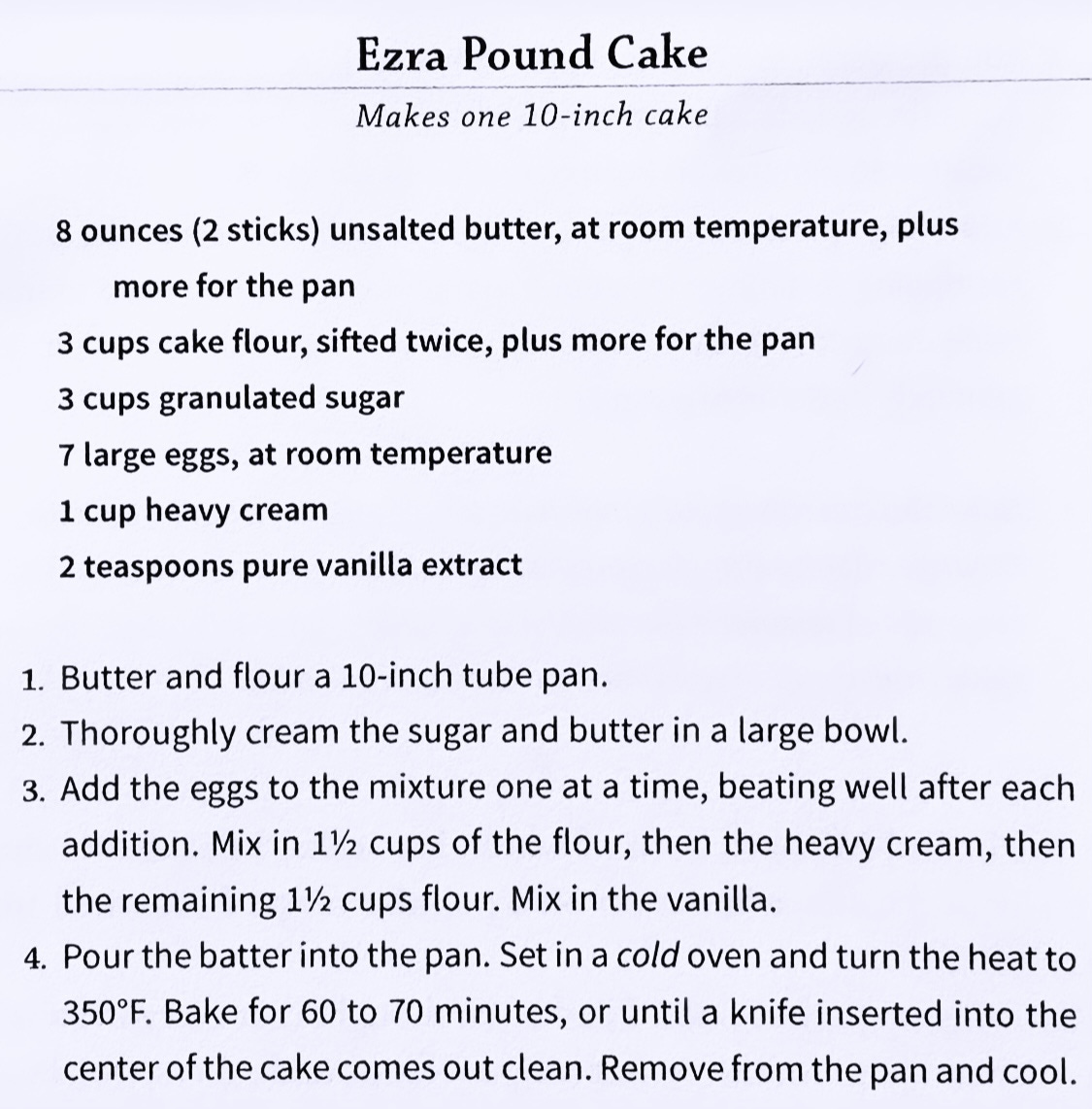
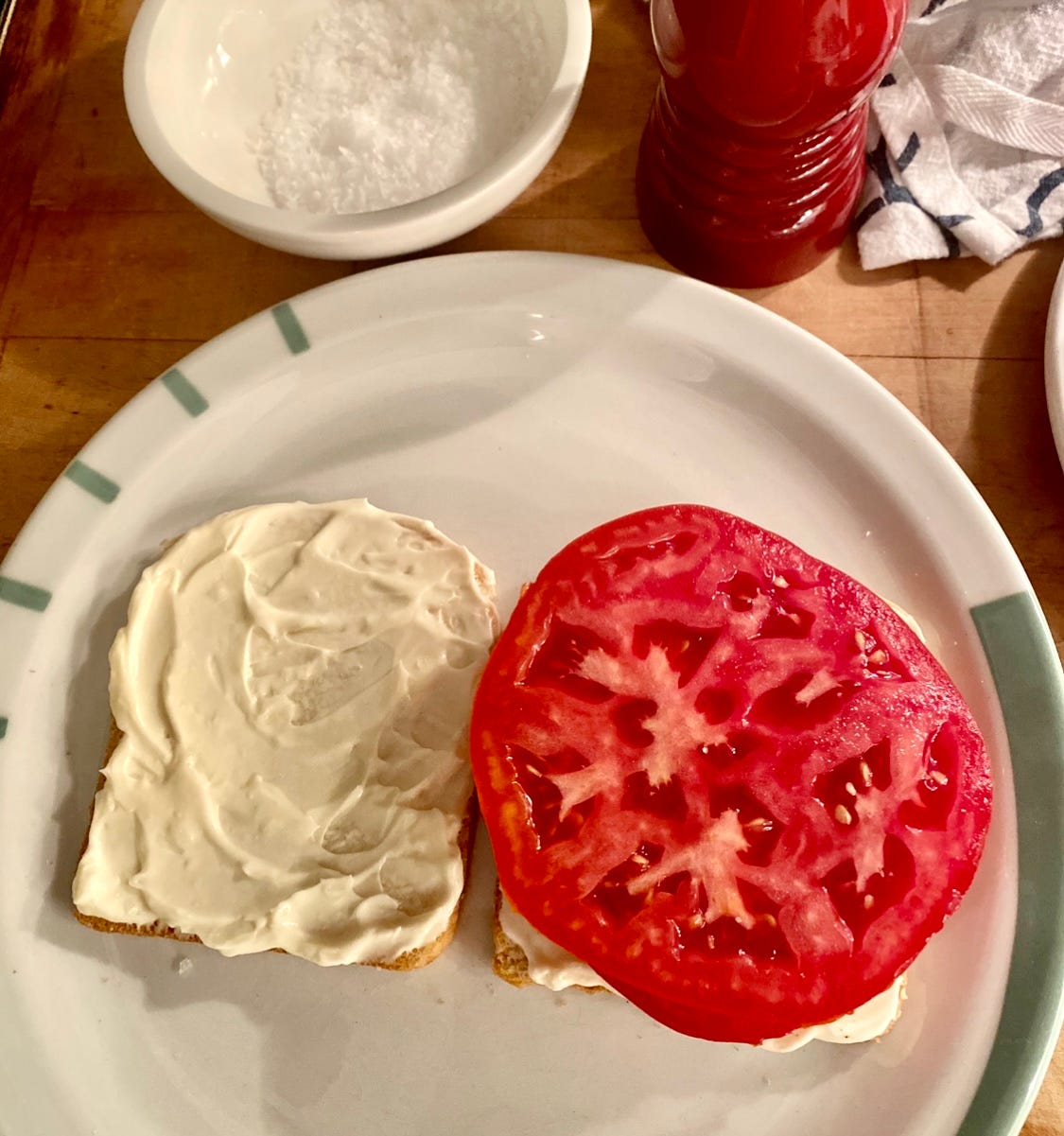
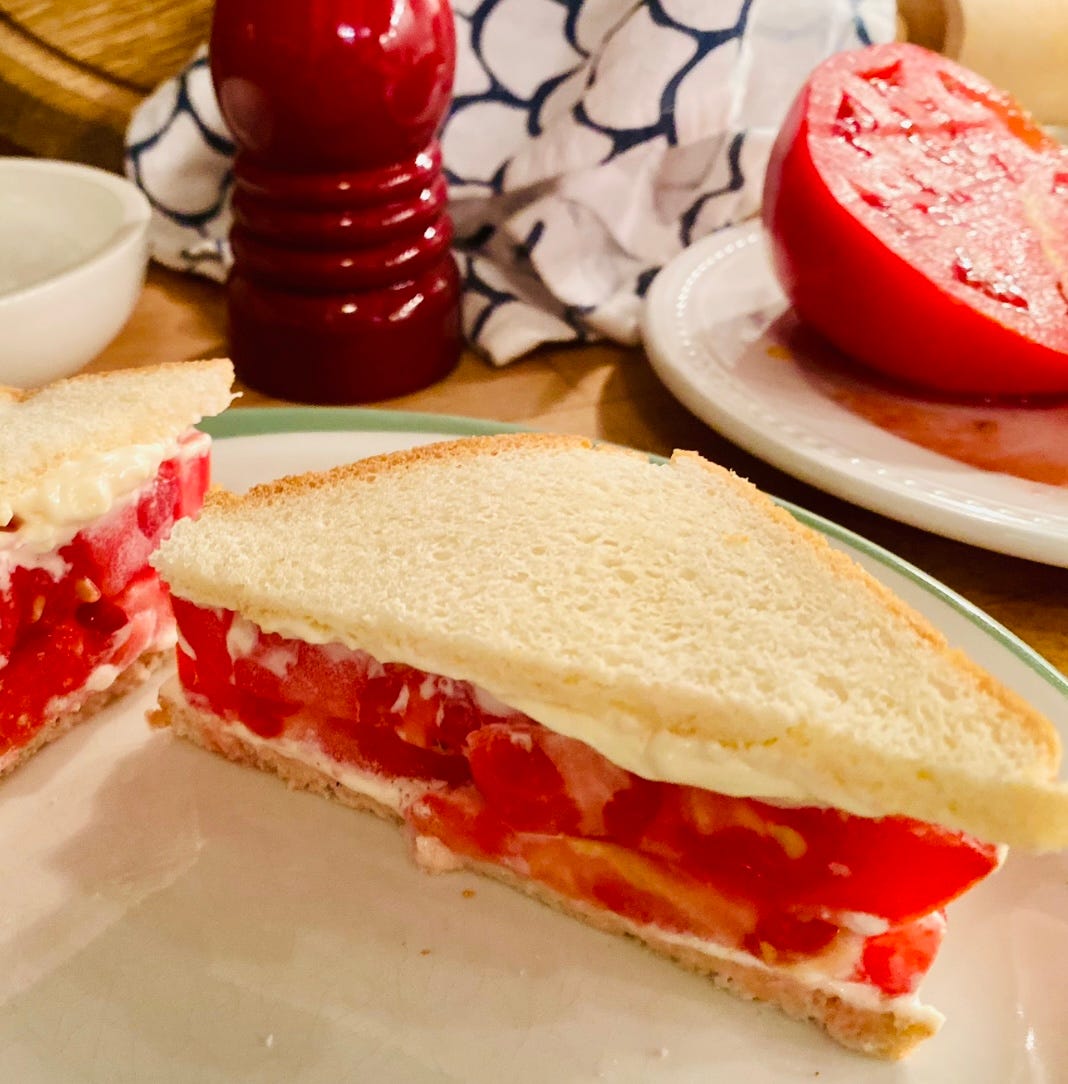
Well played, Jolene. I’ve read both books, yet never realized how nicely they dovetail one another.
PS: My tomato sandwich obsession began at the tender age of 8, because my kid-lit hero, Harriet the Spy, ate them. Yours is a masterpiece!
Oops! I need to clarify. The eggplant book is a collection of essays by food writers. Laurie’s daughter is featured. I thought she had edited the book, but I’m
not sure! I’m always interested in how people eat when they eat alone!